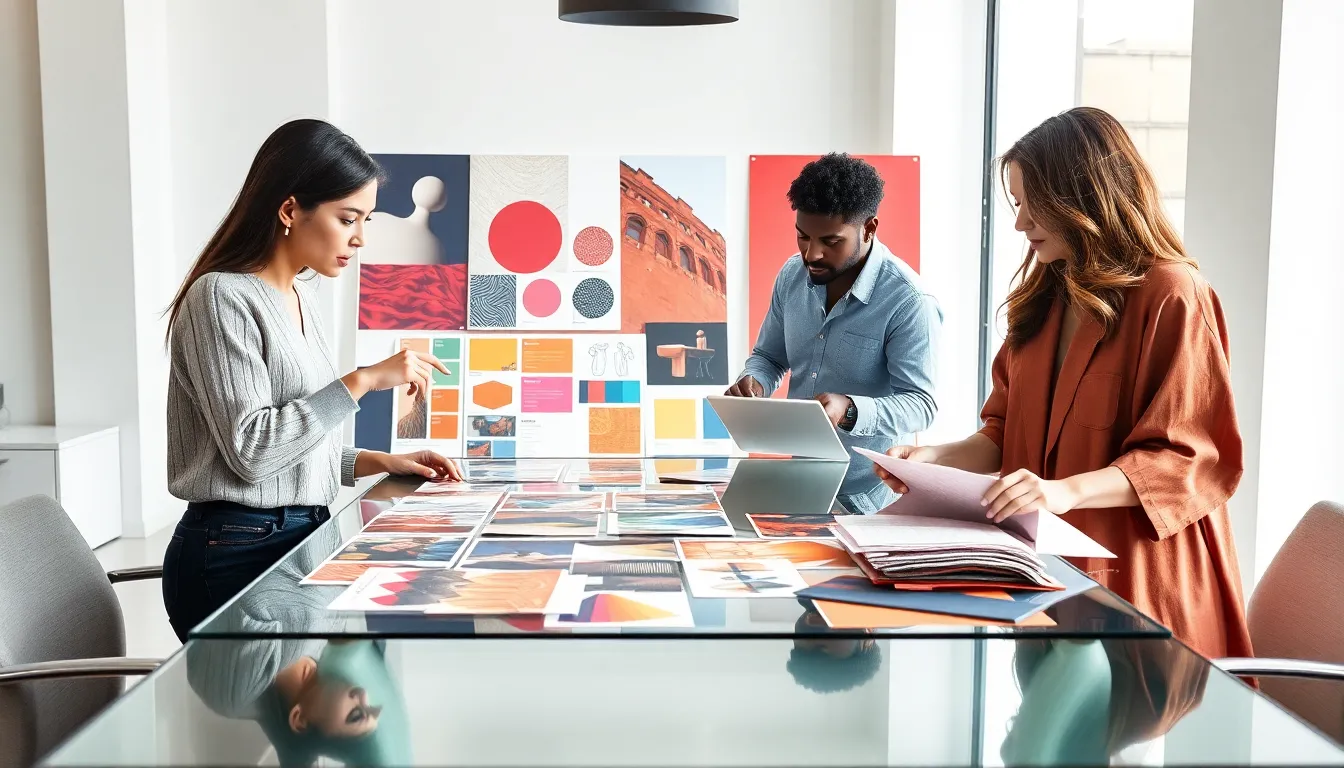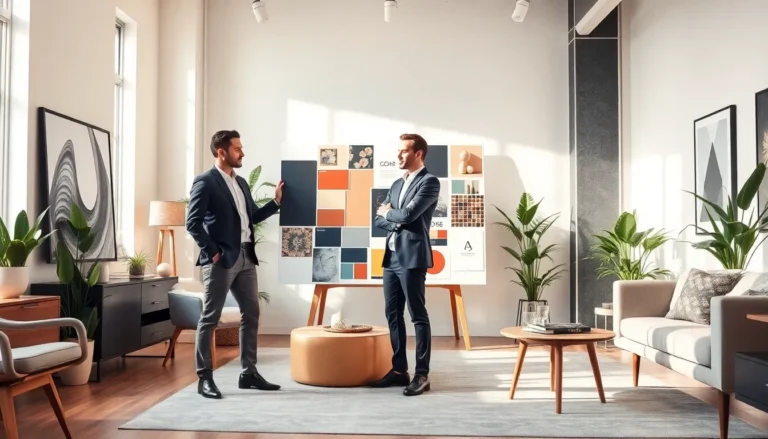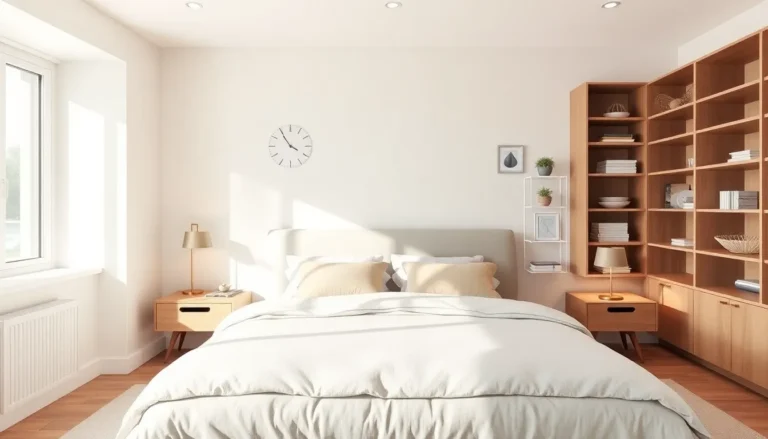Table of Contents
ToggleCreating design and decor can feel like a magical puzzle where every piece counts, and yet, it also sometimes resembles a chaotic game of Tetris gone wrong. But fear not. Whether you’re a seasoned designer or just starting to experiment with your space, this guide is here to unravel the secrets of creating stunning interiors that not only impress but also function beautifully. Let’s jump into the world of design principles, personal style, and all the delightful nuances that breathe life into a space, making it uniquely yours.
Understanding Design Principles

Key Elements of Design
When embarking on a design journey, one must first understand the key elements that form the backbone of any successful project. These include line, shape, texture, space, color, and light. Think of them as the ingredients of a delicious recipe. For example, lines guide the eye, shapes create interest, and textures add depth. Understanding how to blend these elements can make a significant difference in achieving harmony within a space.
Color Theory
Colors evoke emotions, this is no secret. Utilizing color theory can help you choose hues that not only complement each other but also set the tone of a room. Warm colors like reds and oranges can stimulate energy, while cool tones like blues and greens promote calmness. It might be useful to create a mood board, plotting out color combinations that resonate with your vision, ensuring that every shade contributes positively to the overall ambiance.
Balance and Proportion
Finding balance and proportion is vital to any design. Imagine a scale: if one side is too heavy with decor, the space may feel cramped or cluttered. Achieving balance often requires a mix of symmetrical and asymmetrical arrangements. They say good design is like a well-cooked meal: it needs just the right amount of ingredients to please the palate. Experimenting with different arrangements can lead to surprising and delightful results.
Functionality and Flow
Design isn’t merely about aesthetics: functionality plays a critical role. The flow of a space refers to how easily one can navigate through it without feeling blocked or restricted. A well-planned layout allows people to move freely and interact comfortably. For example, if you’re designing a living room, consider traffic patterns, are there clear paths between furniture pieces? This ensures a natural rhythm in the space, making it not only beautiful but also practical.
Incorporating Personal Style
Choosing the Right Materials
Incorporating personal style into design can elevate a space from generic to extraordinary. The right materials can make a significant impact on the overall feel of a room. Consider wooden elements for warmth or metal finishes for a modern touch. Don’t shy away from mixing materials, it’s in those contrasts where personality shines.
Sustainable and Eco-Friendly Options
Today, more people are leaning towards sustainable and eco-friendly design choices. Opting for materials that are ethically sourced or recycled not only reduces your carbon footprint but also adds a unique story to your home. Sustainable design can be stylish, too. From reclaimed wood to bamboo, the options are endless, fostering a space that’s both inviting and responsible.
Textiles and Finishes
Textiles are where design gets cozy and inviting. The right fabrics can soften a space, creating an atmosphere of comfort and warmth. Layering textiles, think cushions, throws, and curtains, can introduce depth and texture, inviting people to linger. Choosing finishes wisely, such as matte versus glossy, can also impact the overall look. For instance, a matte finish can offer an elegant touch, while gloss can reflect light and energize a room.
Lighting Choices and Effects
Utilizing Space Effectively
Lighting transforms how a space is perceived. It’s not just about having enough light: it’s about layering it for various effects. Consider ambient lighting for general illumination, task lighting for activities, and accent lighting to highlight artwork or architectural features. By utilizing space effectively with the right lighting, designers can create mood shifts, making an area feel different throughout the day.
Maximizing Natural Light
Natural light is a designer’s best friend. It brings life into a space and can make rooms feel bigger and more welcoming. Consider sheer window treatments that allow sunlight to filter through or strategically placed mirrors that bounce light around the room. These simple tricks make a tremendous difference, creating the illusion of space and enhancing the overall vibe.
Focal Points and Layouts
Every room should have a focal point, a place that draws the eye and anchors the design. Whether it’s a stunning piece of art, a fireplace, or a statement piece of furniture, this focal point provides context for the rest of the decor. Lay out the room in a way that accentuates this feature while considering how other elements interact with it. A well-planned layout enhances both flow and aesthetic, making the space feel complete and thoughtfully designed.







